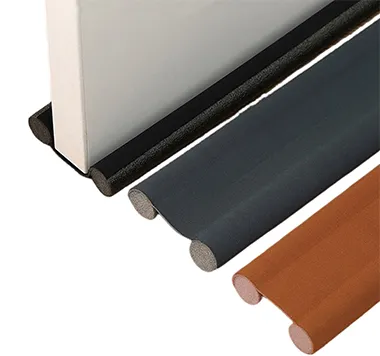Types of Bottom Garage Door Seals - Protect Your Garage Today
Understanding Types of Bottom Garage Door Seals
When it comes to safeguarding your garage from the elements, installing a bottom door seal is one of the most effective measures you can take. These seals not only protect against water damage but also improve energy efficiency by preventing drafts and pests from entering the space. In this article, we will explore the various types of bottom garage door seals available on the market, their benefits, and how to choose the right one for your needs.
1. T-style Seals
T-style seals are one of the most popular options for garage doors. Named for their T-shaped design, these seals are typically made from rubber or vinyl and are installed using a track or groove at the bottom of the garage door. T-style seals are highly effective at keeping out not just rain and snow but also dirt and debris. Their flexibility allows them to adjust to uneven surfaces, ensuring a tight fit that enhances their effectiveness.
Similar to T-style seals, L-style seals are designed with an L shape, allowing them to fit snugly against the floor. These seals are typically made of durable rubber and are particularly useful for homes in areas prone to heavy rainfall, as they create a barrier against water accumulation. The L-shape helps direct water away from the garage entrance, minimizing the chances of flooding.
3. Flat Seals
Flat seals are another straightforward option for garage door sealing. Made from solid rubber or vinyl, flat seals provide a simple design that works well for many standard garage doors. These seals lie flat against the ground and create a barrier against pests and rain. However, their effectiveness can diminish if the ground is uneven, as they do not adapt well to variations in surface height.
types of bottom garage door seals

4. Brush Seals
For those looking for a solution that also addresses airflow, brush seals may be the ideal choice. These seals consist of dense bristles that create a barrier against drafts, dust, and insects. While brush seals are effective for ventilation control, they may not provide the same level of watertight protection as solid rubber or vinyl seals. They are best suited for climates with fewer extreme weather conditions, as they may not completely block water ingress.
5. Threshold Seals
Threshold seals are a more comprehensive solution that combines a seal with a raised threshold at the garage entrance. This design helps prevent water from flowing into the garage while also providing a durable barrier against pests and drafts. Threshold seals can be ideal for properties in flood-prone areas, as they provide added protection compared to standard seals.
Choosing the Right Seal
When selecting a bottom garage door seal, consider the specific needs of your garage. Factors such as climate, the level of traffic through the garage, and the condition of the floor should guide your decision. A T-style or L-style seal may be best for areas with significant moisture, while a brush seal may suffice in dryer environments.
In conclusion, bottom garage door seals are essential for maintaining a comfortable and secure environment within your garage. Understanding the different types available will help you make an informed decision that not only protects your garage but also enhances its longevity and functionality. Whether you opt for a T-style seal, an L-style seal, a flat seal, a brush seal, or a threshold seal, the right choice will make a significant difference.
-
Silicone Seal Strip: The Ultimate Solution for Your Sealing NeedNewsNov.01,2024
-
Keep the Heat: The Importance of Seal for Oven DoorsNewsNov.01,2024
-
Essential Guide to Corner Protectors for Your FurnitureNewsNov.01,2024
-
Enhance Your Home with Silicone SolutionsNewsNov.01,2024
-
Efficient Maintenance of Melamine Sealing StripsNewsNov.01,2024
-
Comparison of Different Edge Sealing ProcessesNewsNov.01,2024
-
Types of Door Bottom Seal Strips and Their Best UsesNewsOct.25,2024